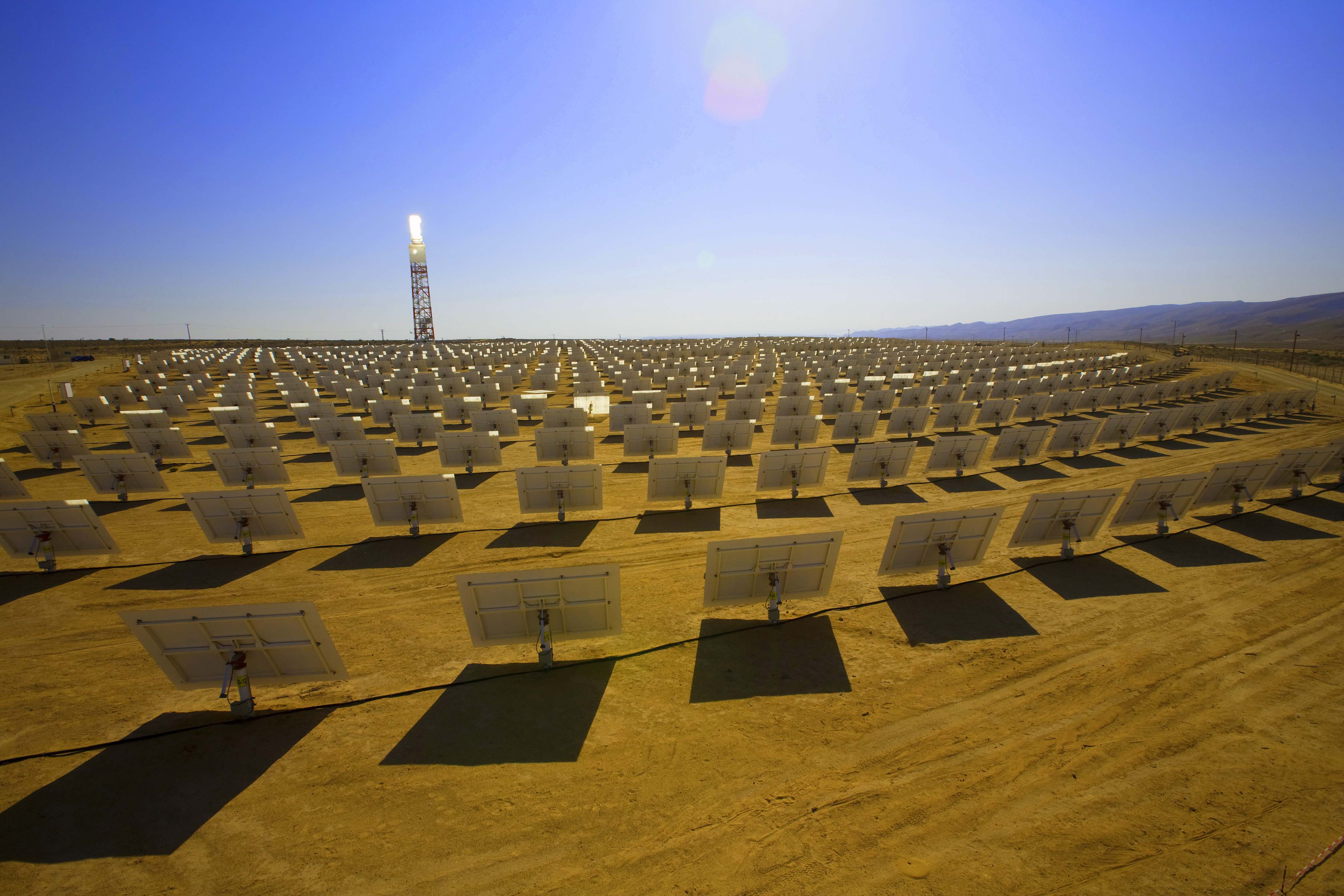Google cans solar energy project


Google said it is dropping development of “solar thermal” electricity because solar thermal cannot keep pace with the rapid price decline of another solar technology – photovoltaics. The solar thermal cut came as part of Google’s decision to axe its 4-year old Renewable Energy Cheaper than Coal initiative, although other renewable programs remained intact.
“The installed cost of solar photovoltaic technology has declined dramatically over the past few years, making solar photovoltaic technology a compelling choice for consumers,” Google Fellow and senior vice president of operationsUrs Hölzle said in a blog post.
Photovoltaics use solar cells embedded in panels to directly generate electricity. Solar thermal uses mirrors to focus sunlight on a fluid that heats up, creates steam and drives a turbine. It’s also known as “concentrating solar power” (CSP).
Google’s investments in solar thermal have included$168 million in a giant solar farm that Brightsource Energy Inc. is building in Ivanpah, Calif., and a $10 million infusion in Burbank, Calif.-basedeSolar.
Solar thermal makes a spectacular picture, especially the sort that reflects sunlight up to a tower (some solar thermal plants reflect the light onto pipes that run past parabolic mirrors). But several energy companies have started to back off the technology in favor of photovoltaics, such as at California’s huge Blythe installation. The chairman of Spanish utility giant Iberdrola recently blasted solar thermal as senseless.
Still, other companies are standing by it, noting that it's the right choice under certain conditions. It is the centerpiece technology in the Desertec Industrial Initiative’s overarching long term scheme to provide 15 percent of Europe’s electricity from solar farms scattered across N. Africa and the Middle East. Construction is set to begin on the first of Desertec’s solar thermal plants next year in Morocco, with a $297 million loan from the World Bank.
A third approach to solar, called concentrated photovoltaics (CPV), borrows from both PV and solar thermal, in that it magnifies sunlight onto solar cells.
In canning its solar thermal work, Google is reigning in what some critics have argued was a push too far afield of its core business of Internet search and advertising. As SmartPlanet's Larry Dignan wrote when Google launched Renewable Energy Cheaper than Coal in 2007, "Unless Google is putting ads on windmills it looks like a detour that could make shareholders squirm."
Google has freely published results of its research in the solar thermal on the web.
Google's now defunct Renewable Energy Cheaper than Coal (RE<C) also invested in Potter Drilling in an effort to advance geothermal power, and financed a recent geothermal map of the U.S.
This is not the first time that a Google energy investment has run aground. Two years ago, Google-backed AltaRock Energy abandoned a geothermal project in California after hitting “geological anomalies."
Although Googleis retiring its solar thermal and RE<C program, Hölzle said the company remains committed to other renewable energy initiatives.
“We will continue our work to generate cleaner, more efficient energy—including our on-campus efforts, procuring renewable energy for our data centers, making our data centers even more efficient and investing more than $850 million in renewable energy technologies,” he said.
Some of Google’s others renewables investments have included $280 million and $75 million respectively in residential PV firms Solar City and Clean Power Finance; $157 million in a Mojave wind project called Alta Wind Energy Center; $100 million in Oregon’s Shepherd’s Flat wind project. It has also taken a 37.5 percent equity stake in the Atlantic Wind Connection project in the U.S.’s mid-Atlantic region, has backed the Peace Gardens wind farms in N. Dakota, and has help to fund Makani Power, an Alameda, Calif. startup that aims to harness electricity from wind turbines mounted on kites.
“In addition to investing in renewable energy for our own operations, we’re investing in renewable power projects to grow the industry as a whole,” the company said on a web page. “Specifically, we've invested hundreds of millions of dollars in renewable energy projects such as large-scale wind and rooftop solar. When added up, these projects represent a total capacity of over 1.7 GW, which is far more electricity than we use. To put this in context, this electricity is equivalent to that consumed by more than 350,000 homes.”
In addition to bowing out of solar thermal, Google also axed a number of IT initiatives. The full list is on its blog post.
Photo: Brightsource
More solar rock-'em sock-'em:
- World Bank unleashes Africa’s solar potential
- French-California connection sees solar through new lens
- Construction of world’s biggest solar project starts in 2012
- Solar v Solar: Gloves come off at the G20 Summit
- EU: Solar electricity will help bail out Greece
- Another Brightsource solar thermal power plant is on its way
- The changing tech of utility scale solar projects
- The world’s largest solar plant
- Shock technology shift at huge Calif solar plant
Some Google soothsaying from 4 years ago:
This post was originally published on Smartplanet.com